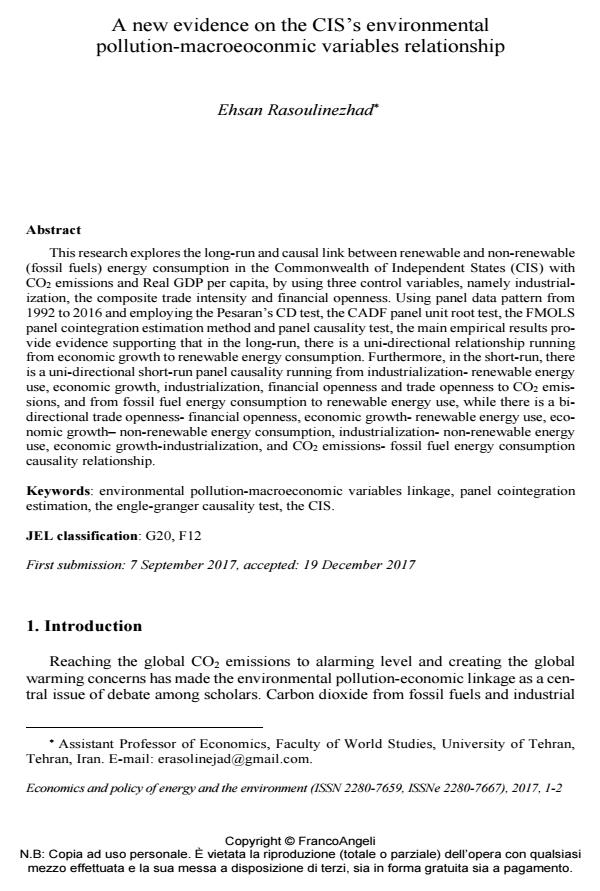A new evidence on the CIS’s environmental pollution-macroeoconmic variables relationship
Titolo Rivista ECONOMICS AND POLICY OF ENERGY AND THE ENVIRONMENT
Autori/Curatori Ehsan Rasoulinezhad, Farhad Taghizadeh-Hesary
Anno di pubblicazione 2017 Fascicolo 2017/1-2
Lingua Inglese Numero pagine 21 P. 273-293 Dimensione file 390 KB
DOI 10.3280/EFE2017-001014
Il DOI è il codice a barre della proprietà intellettuale: per saperne di più
clicca qui
Qui sotto puoi vedere in anteprima la prima pagina di questo articolo.
Se questo articolo ti interessa, lo puoi acquistare (e scaricare in formato pdf) seguendo le facili indicazioni per acquistare il download credit. Acquista Download Credits per scaricare questo Articolo in formato PDF

FrancoAngeli è membro della Publishers International Linking Association, Inc (PILA)associazione indipendente e non profit per facilitare (attraverso i servizi tecnologici implementati da CrossRef.org) l’accesso degli studiosi ai contenuti digitali nelle pubblicazioni professionali e scientifiche
This research explores the long-run and causal link between renewable and non-renewable (fossil fuels) energy consumption in the Commonwealth of Independent States (CIS) with CO2 emissions and Real GDP per capita, by using three control variables, namely industrialization, the composite trade intensity and financial openness. Using panel data pattern from 1992 to 2016 and employing the Pesaran’s CD test, the CADF panel unit root test, the FMOLS panel cointegration estimation method and panel causality test, the main empirical results provide evidence supporting that in the long-run, there is a uni-directional relationship running from economic growth to renewable energy consumption. Furthermore, in the short-run, there is a uni-directional short-run panel causality running from industrialization- renewable energy use, economic growth, industrialization, financial openness and trade openness to CO2 emissions, and from fossil fuel energy consumption to renewable energy use, while there is a bi-directional trade openness- financial openness, economic growth- renewable energy use, economic growth-non-renewable energy consumption, in-dustrialization- non-renewable energy use, economic growth-industrialization, and CO2 emissions- fossil fuel energy consumption causality relationship.
Parole chiave:Environmental pollution-macroeconomic variables linkage, panel cointegration estimation, the engle-granger causality test, the CIS
Jel codes:G20, F12
Ehsan Rasoulinezhad, Farhad Taghizadeh-Hesary, A new evidence on the CIS’s environmental pollution-macroeoconmic variables relationship in "ECONOMICS AND POLICY OF ENERGY AND THE ENVIRONMENT" 1-2/2017, pp 273-293, DOI: 10.3280/EFE2017-001014